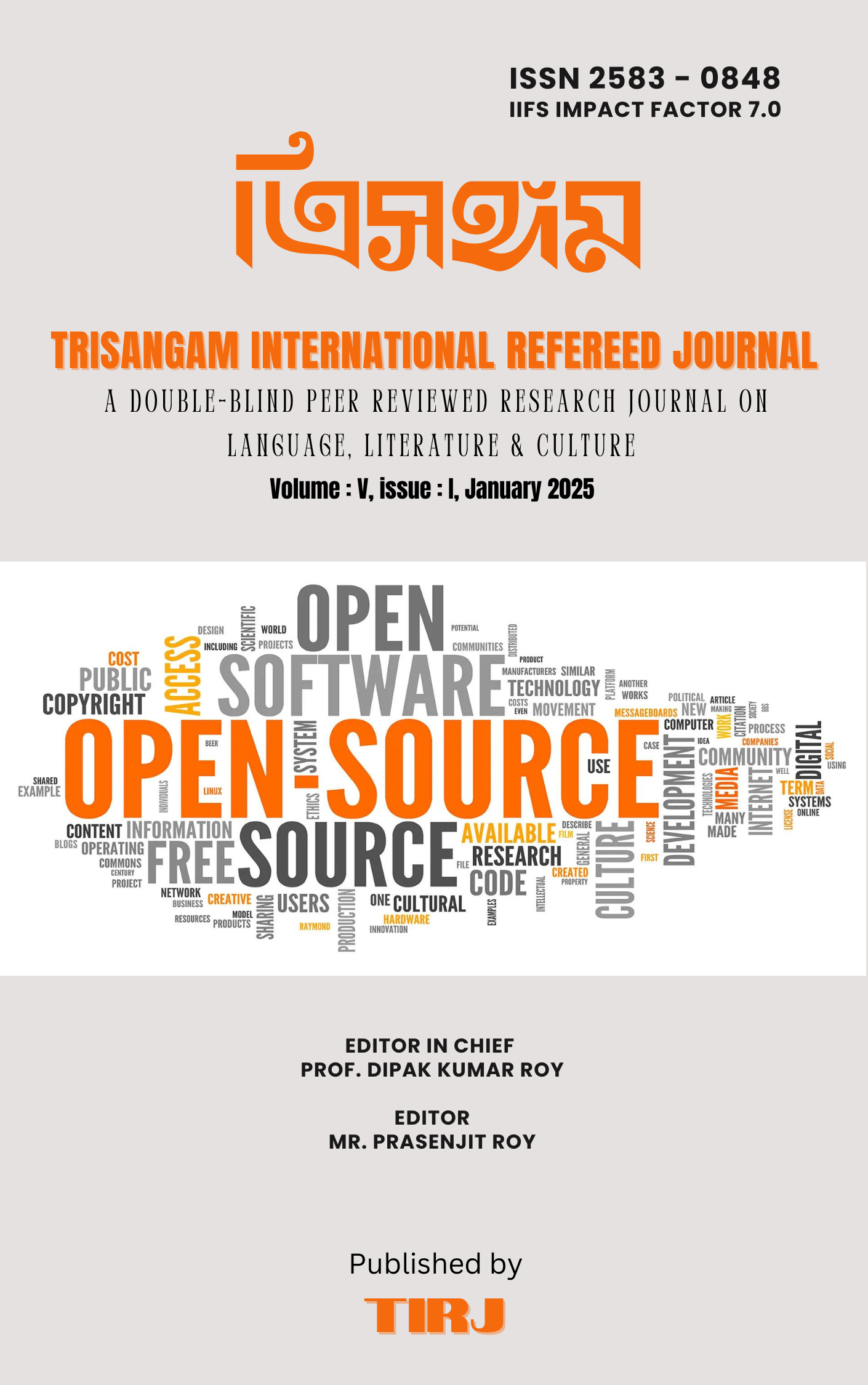The Structural Nature of Bengali Proverbs/ বাংলা প্রবাদের গঠনপ্রকৃতি
Keywords:
- Proverb,
- Construal,
- Functionality,
- Padaprakaran,
- Dual Contrast,
- Psychoanalysis,
- Chaturanga Construal,
- Neutral-Sympathetic
Abstract
The premises of folk culture have always been wide-ranging – from past to present to future, from village to city, from uneducated to educated societies, from oral to written traditions. Discussions about its science were at first whimsical and in which the role of the collector rather than the expert was predominant; Later that discussion turned into an in-depth analysis of scholarly society. The discussion of folk culture morphology or structuralism is a product of this expanded vision. Although linguists have developed the concept of structuralism in the scope of sociolinguistics, this method has been applied and discussed in the field of folk culture by Propp, Strauss, Dundis, Maranda couple, Milner, Goodwin and Wenzel, Peter Sistel and others. One of the main forms of non-material folk culture is that proverbs, though short-lived, incorporate the essence of long-lived experiences in folk society. Since it depends on unwritten and spoken sentences, its stylistic analysis should be in the form of 'sentences'. If you don't know its exact form, judging its structure may be incomplete or wrong. Therefore, it is necessary to judge the form or structure of the proverb to understand the people's experience, integrated social-psyche awareness, utility of daily folk usage, literary beauty and sense of humor etc. Western folklorists have analyzed the structure-nature or structure of proverbs in various ways. The order and measure of people can be identified from the structure-size-type-semantic features of proverbs. As a result proverbs are not composed randomly; It is based on scientific reasoning. This will be discussed in detail in the main article.
Downloads
References
১. ভট্টাচার্য, আশুতোষ, বাংলার লোক-সাহিত্য (১ম খণ্ড, আলোচনা), ক্যালকাটা বুক হাউস, ১/১, কলেজ স্কোয়ার, কলিকাতা - ১২, প্রথম সংস্করণ, ১৯৫৪, পৃ. ৫৬৯
২. চক্রবর্তী, বরুণ কুমার (সম্পাদিত), প্রবাদ প্রসঙ্গ, অক্ষর প্রকাশনী, ৩২ বিডন রো, কলকাতা- ৬, প্রথম প্রকাশ, মার্চ, ২০১০, পৃ. ৩২৮
৩. ইসলাম, মযহারুল, ফোকলোর চর্চার রূপতাত্ত্বিক বিশ্লেষণ পদ্ধতি, লোকলৌকিক প্রকাশনী; কলকাতা- ৪৭, প্রথম প্রকাশ, জুলাই, ১৯৮২, পৃ. ১৪ – ৫২
৪. Dundes, Alan, ‘On the structure of the proverb’, The Wisdom of Many, edited by Wolfgang Mieder and Alan Dundes, New York, 1981; p. 63 (footnote)
৫. পোদ্দার, সুস্মিতা, লোকসংস্কৃতি (ঐতিহাসিক ও তাত্ত্বিক বিশ্লেষণ), লোকসংস্কৃতি ও আদিবাসী সংস্কৃতি কেন্দ্র, প্রথম প্রকাশ, বইমেলা, ২০০১, পৃ. ২১২
৬. Dundes, Alan, ‘Structuralism and Folklore’ (1978) in Essays in Folkloristics, Folk Institute; Meerot, Ved Prakas Vatuk, P. 74
৭. চক্রবর্তী, বরুণকুমার (সম্পাদিত), প্রবাদ প্রসঙ্গ, পৃ. ৩৪৭ - ৪৮
৮. চৌধুরি, দুলাল, প্রবাদকোষ, দে’জ পাবলিশিং, ১৩ বঙ্কিম চ্যাটার্জী স্ট্রিট, কলকাতা- ৭৩, প্রথম প্রকাশ, জানুয়ারি, ২০১২, পৃ. ১৯
৯. চক্রবর্তী, বরুণকুমার (সম্পাদিত), প্রবাদ প্রসঙ্গ, পৃ. ৩৪২
১০. Dundes, Alan, ‘On the structure of the proverb’, পৃ. ৪৯ - ৫০
১১. ওই, পৃ. ৫১ - ৫২
১২. আহমেদ, ওয়াকিল, বাংলা লোকসাহিত্য : প্রবাদ-প্রবচন, বাংলা একাডেমী, ঢাকা, প্রথম প্রকাশ, জুন, ১৯৯৪, পৃ. ২৩
১৩. মিত্র, সনৎকুমার (সম্পাদক), ‘লোকসংস্কৃতি গবেষণা’ ত্রৈমাসিক পত্রিকা, লোকসংস্কৃতি গবেষণা পরিষদ, পশ্চিমবঙ্গ, ৬০ জেমস্ লঙ্ সরণি, বেহালা, কলিকাতা – ৩৪, ৭ম বর্ষা, ১ম সংখ্যা, ১৪০১, পৃ. পাঁচ
১৪. ওই, পৃ. পাঁচ-ছয়
১৫. Sietel, Peter, Proverbs : A Social use of Metaphor, The Wisdom of Many, p. 125 - 127
১৬. ওই, পৃ. ১২৫-১২৭






